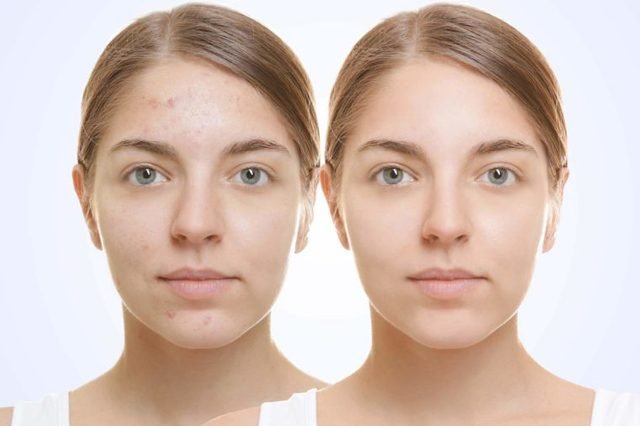Glycolic acid, the fruit acid that gives pep's to the skin

Glycolic Acid
Glycolic acid (or hydroxyacetic acid or AHA) is an alpha-hydroxyl acid derived from sugar cane, beetroot, grapes. In cosmetics, it can be of natural origin or synthesis. Thanks to its very powerful keratolytic activity, fruit acid has established itself as the reference ingredient for chemical peels (as opposed to mechanical peels). Moreover, its very small size gives it an excellent ability to penetrate the upper showers of the epidermis, it can reach the derma for a deep action. It is the asset to target when you want to boost the radiance of your complexion, look good but also treat acne problems, hyperpigmentation, scars and even wrinkles.
What are the properties of glycolic acid?
Glycolic acid is a keratolytic agent, it peels off and removes dead cells on the surface of the skin. Promoting cell renewal, bringing brightness to dull complexions. It is also a pH regulator, is used to stabilize the pH of cosmetics and a deposing active ingredient.
What are his duties?
Glycolic acid is a fabulous ingredient to restore the skin to its full radiance. Its peeling effect is extremely reputed. It activates skin cell renewal, accelerates the peeling and elimination of dead skin cells that offers a new youth under its action. In facials, it is used to lighten the complexion, reduce brown spots due to age or sun. An action related to its role on cell renewal but also due to its ability to inhibit the production of melanin. Fruit acid works at all levels to eliminate irregularities, maintain and promote a healthy epidermis.
AHA is one of the smallest alpha-hydroxyles which allows it to penetrate deep, pass the surface layers of the epidermis where it contributes to better oxygenation of tissues, renewal of cells and helps maintain a good level of skin hydration. Fruit acid helps retain moisture in tissues and helps to limit water loss. Its in-depth action also helps to smooth wrinkles. It stimulates the synthesis of collagen and elastin which improves the quality of the skin, blurs wrinkles and fine lines.
What is the use of glycolic acid in cosmetics?
Glycolic acid is primarily used for its exfoliating action, it is the reference asset of peels to treat the radiance of the complexion, the problems of pigment spots. It is often preferred to mechanical peels because it is less abrasive, no mechanical friction is necessary, it acts "on its own".
In which products can glycolic acid be found?
Lotions, serums, day creams, night creams... glycolic acid is part of the formulation of many facials. But it is especially in peels and exfoliating products that it is most sought after. It is also part of the composition of oily skin care where it plays a sebo-regulatory role. Its lightening and anti-wrinkle properties are an asset for treating mature skin.
The effectiveness of a glycolic acid treatment depends on its dosage. For a gentle exfoliation, a concentration of 4% is enough. Between 4 and 10% AHA in a formula, the treatment will act on wrinkles, shine, in detox care. There is usually a higher concentration in night care than during the day. Indeed, glycolic acid is photosensitizing. In day care, it is advisable to associate it with a treatment containing an SPF. Over 20% of AHA in a product (usually to treat acne and pigment stain disorders), it is best to consult a dermatologist to make sure you are not sensitizing the epidermis and to use the product in the best conditions.
What are the benefits of glycolic acid?
The peeling effect of glycolic acid improves the quality, the texture of the epidermis, and refines the skin grain. The complexion is smooth, luminous, more homogeneous. It looks cooler, like awake. This is the active "zero defect" skin. Thanks to its action on cell renewal, it promotes the firmness and tone of the tissues, smoothes wrinkles. It is an anti-ageing and anti-photoaging activeness of choice. Studies have shown that a daily application of a treatment containing 5% glycolic acid reduces the effects of photoaging.
Are there any health risks?
Fruit acid is a rather well-tolerated active ingredient that can be used to treat normal, mixed to oily, mature skin. However, its desquamante action weakens the epidermis which becomes more sensitive to pollution, scrubs, UV rays. Excessive use, overdosed, with an inadequate pH can cause irritation, redness, tenderness, discomfort. It is also a photosensitizing active ingredient (causing skin reactions under the effects of UV rays). It is advisable to apply the treatments by containing in the evening and to associate them with a cream with SPF during the day.
